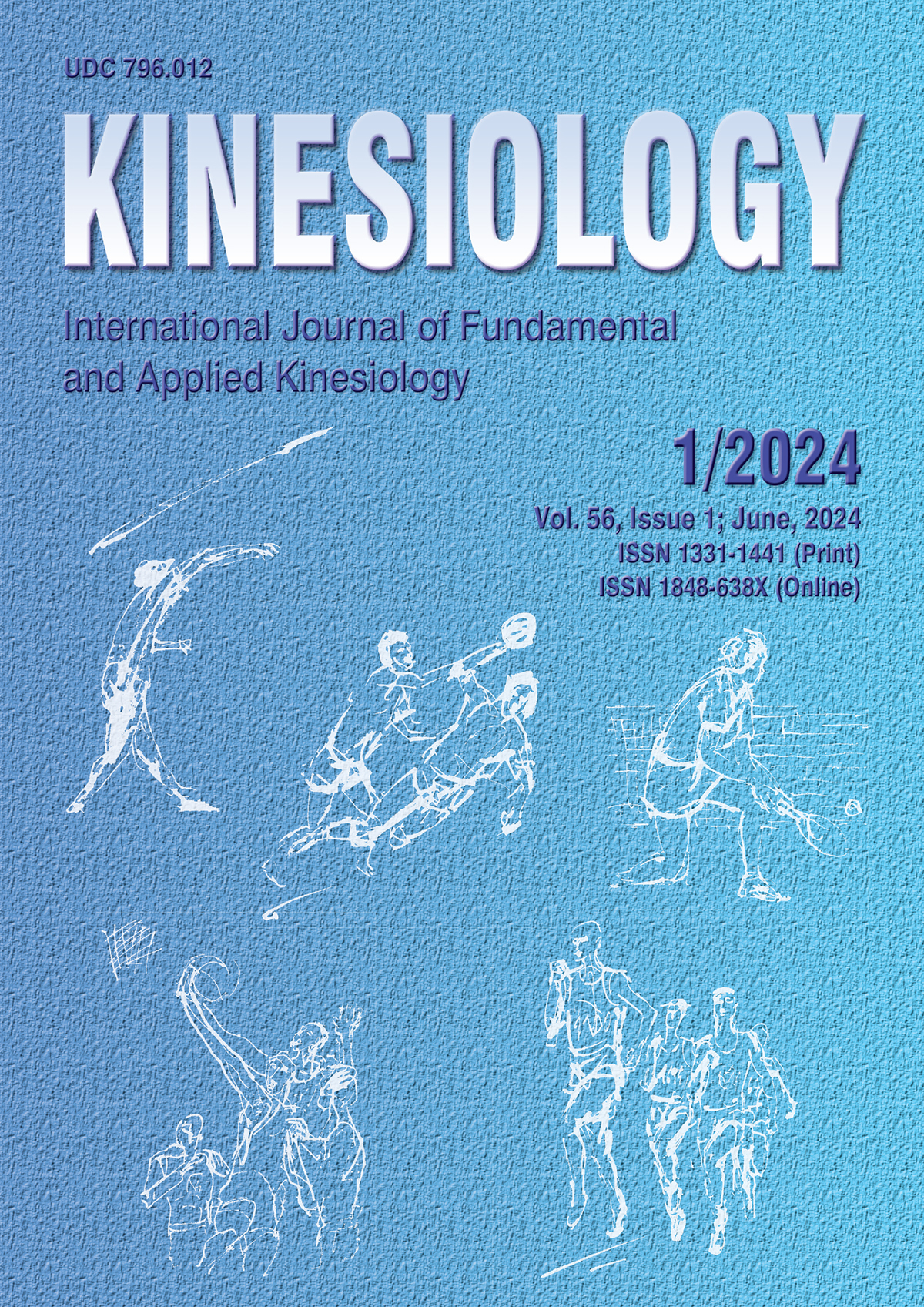COMPARATIVE STUDY OF POSITIONING AND TECHNICAL-TACTICAL INDICATORS BETWEEN TEAMS OF DIFFERENT PERFORMANCE LEVELS IN THE QATAR 2022 FIFA WORLD CUP
Keywords:
FIFA World Cup, Key Performance Indicators, Logistic Regression, Technical-Tactical AnalysisAbstract
The aim of the study was to identify the technical-tactical indicators and differentiate collective positioning between the qualified teams and teams non-qualified for the final phase of the FIFA World Cup Qatar 2022, considering effective playing time. The aim was also to understand the interaction of variables that significantly increased the likelihood of being qualified in the analysed championship. We conducted a comparative analysis that covered all matches played (N=64), evaluating 93 technical-tactical indicators, 24 collective positional indicators and six hybrid indicators. The absolute technical-tactical indicators were normalised based on the effective playing time of each team in each match. We used t-tests and binary logistic regression (R2 Nagelkerke = .738 – AUC = .955) to analyse differences and determine their statistical significance (p<.05). Our analysis revealed significant differences in 33 indicators, suggesting that certain technical-tactical aspects played a crucial role in teams’ performance. Furthermore, through multivariate analysis, we were able to identify that offensive efficiency in set pieces, the height of the defensive line during the offensive phase, and the ability to reduce the available playing space for the opposing team during the defensive phase emerged as the main indicators that allowed us to classify the teams’ performance. These findings enable coaches to use the identified key indicators as performance predictors to devise match strategies aimed at enhancing the effectiveness of their teams.
Keywords: FIFA World Cup, key performance indicators, multivariate analysis, match analysis
Downloads
Published
How to Cite
Issue
Section
License

This work is licensed under a Creative Commons Attribution-NonCommercial 4.0 International License.
At Faculty of Kinesiology we recognize that access to quality research is vital to the scientific community and beyond. Kinesiology is non-profit journal and all costs of publishing and peer review process are covered by the publisher itself or other funding sources like Ministry of Science and Education of the Republic of Croatia. Full text papers are also available free of charge at http://hrcak.srce.hr/kineziologija. There are no restrictions on self archiving of any form of paper (preprint, postprint and publisher's version).
Articles are distributed under the terms of the CC BY - NC 4.0
Kinesiology does not charge any fees to authors to submit or publish articles in our journal.


